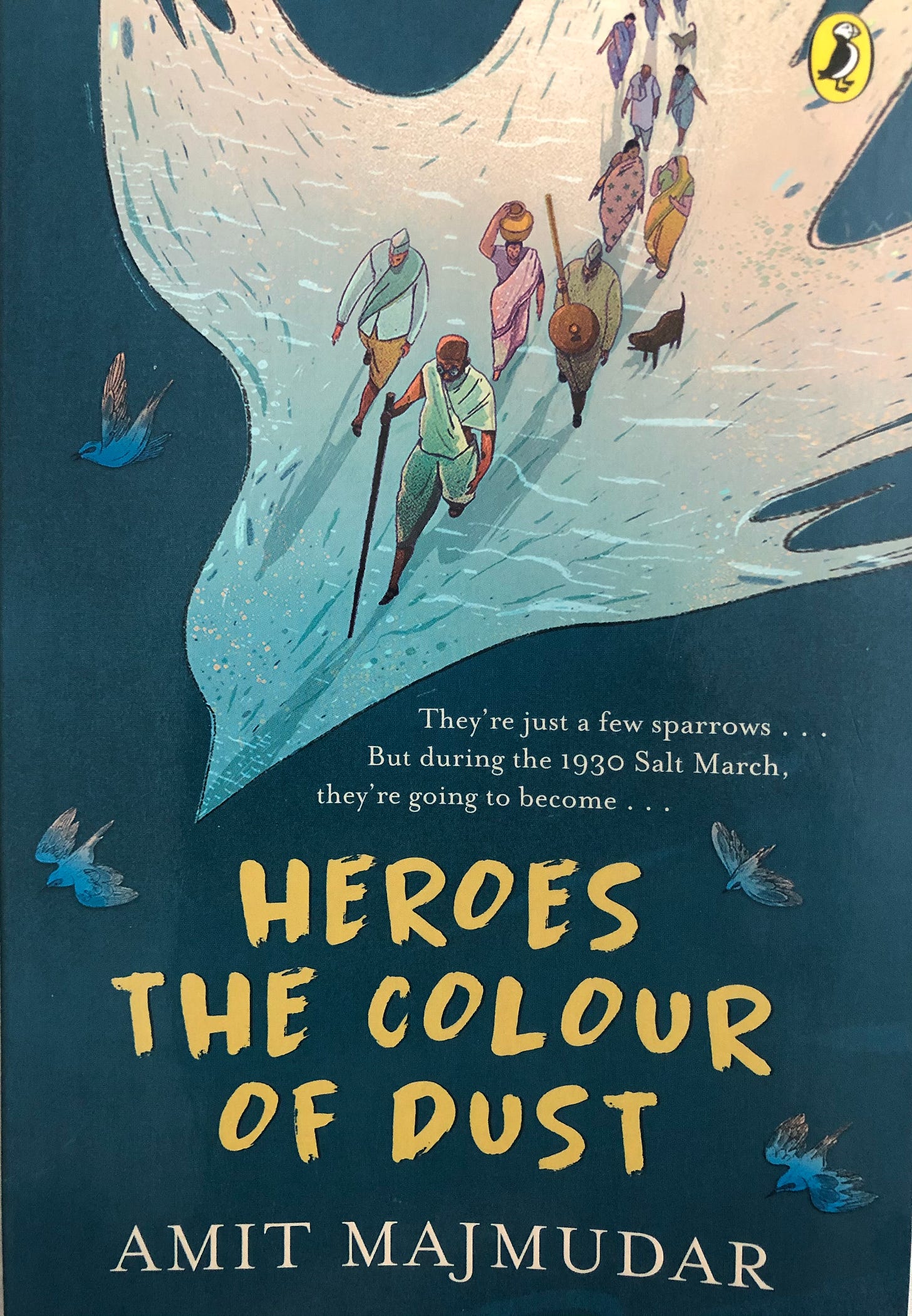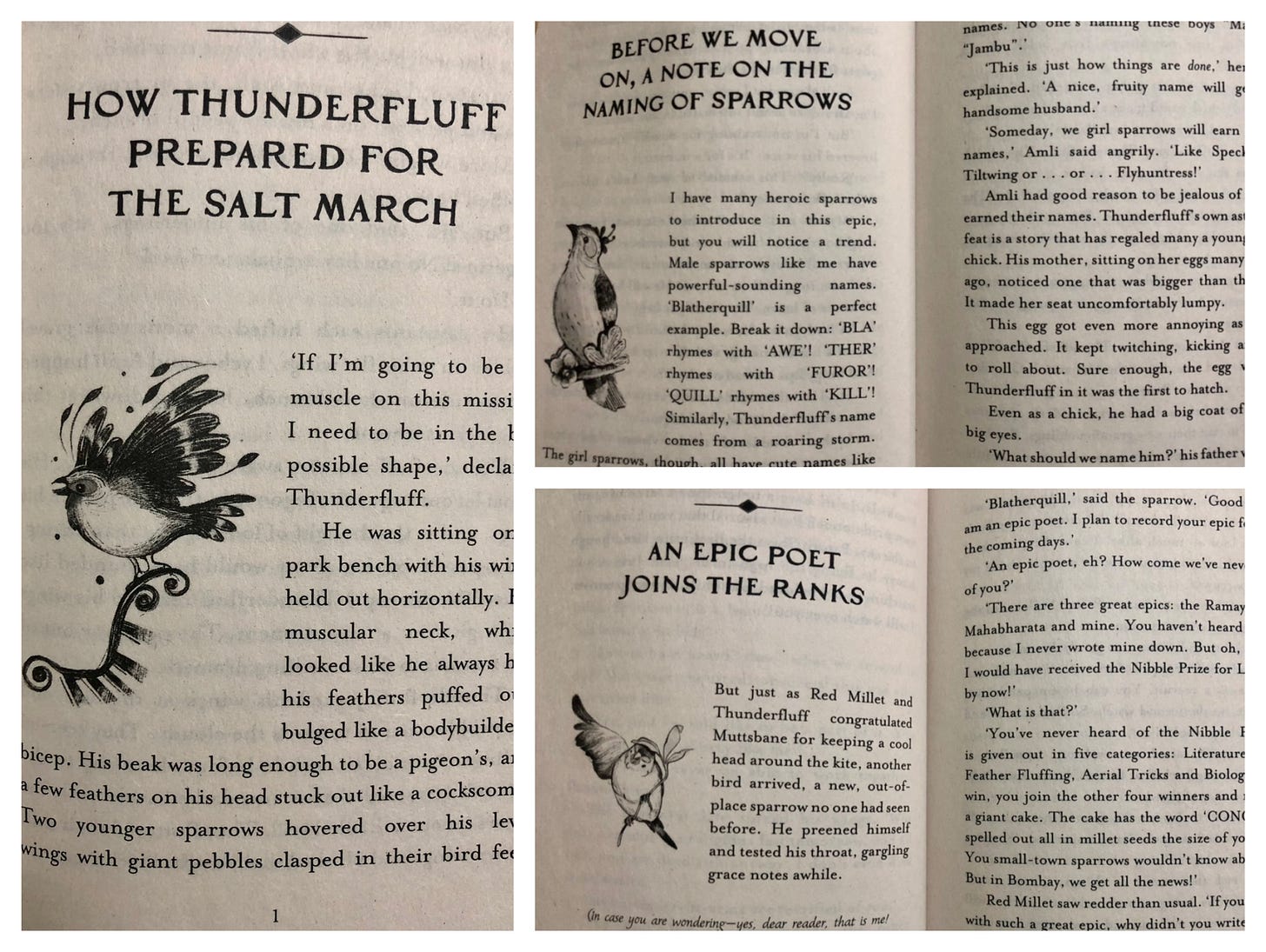“Heroes the Colour of Dust” by Amit Majmudar and illustrated by Aradhana Rawat. Published by Penguin. An epic written by that Nibble Prize worthy sparrow warrior poet Blatherquill chronicling the events when he served with five other sparrows as Mahatma’s guards during the Dandi Salt March in 1930.
Six ordinary sparrows rising to the status of heroes by their outstanding feats of bravery is something that no history books talk about. Indian freedom struggle involved creatures like these and in good measure. Their adventures, daring escapades from ferocious street dogs and cats, bitter vendettas, sneaky British Sahibs who want to thwart the salt march, testing times for friendships, sibling rivalry, tragic moments and young love are some of the highlights of this saga. Their determination and motivation to ensure the safety of Gandhiji so that the salt March protest would go on without any hindrances was exemplary.
Muttsbane (haunted by the memories of a she-mutt who got half burnt while chasing him), twins Lychee and Amli (who are as different as chalk and cheese), Blatherquill (who must rise to the occasion and help the others by becoming a warrior in addition to the scribe that he primarily wants to be), Thunderfluff (who had a fine reputation of strength to live up to) and Red Millet (who was hot headed and didn’t like to do sweet talk diplomacy) were the six guards on the mission. They were a lot who were ready for all kinds of sacrifices and derring-dos. They had made up their mind to protect Gandhiji from any kind of foe (be it a bird, mutt or a Britisher). Unexpected allies, both human and other birds such as Pandit Shiva (a Brahminy Kite!), came to their help. Read the gripping story to know how they became heroes in their own right.
My almost eight year old enjoyed reading the book with me. We just couldn’t put it down and were eager to know what was going to happen next. While the backdrop of the plot was a serious one, there was enough humour in the story to keep him chuckling while being on the edge of his seat! Blatherquill’s self assertion and vanity, Muttsbane’s testing times, their strategic planning were things that my son enjoyed. He was at a loss in choosing who his favourite character was as he loved all of their antics and couldn’t pinpoint just one of them. This story was a wonderful way of explaining about the conditions during the British times and why the Dandi Salt March was planned.
Who would want to read boring history lessons while the same information could be told using such an exciting story! While giving enough prominence to Blatherquill (the chatty two-winged and dust-coloured veteran of the Mahatma’s guards), we shouldn’t be forgetting the translator’s role here. How else could we have known about the original epic in Sparrowese?! Overall a riveting read.
Disclaimer - We received this book from the publisher, Penguin India, for review. Thank you to Greeshma and Mansi, from Penguin, for sending across the book!
Recommended Age
The book is apt for children aged 10 and above for self reading. That said, it can also be read aloud with a little bit of explaining for 8 years and above like we did.
Reasons to Read
The book gives a different perspective to the Indian freedom struggle through the eyes of sparrows.
The story can be used to understand the events that led to the famous Dandi Salt March in 1930.
Last but not least. How can one not read the epic from the league of the Ramayana and Mahabharata penned by warrior poet Blatherquill in Sparrowese translated into English for our convenience.
Where to buy from?
An independent indie bookstore, Funky Rainbow, from where I buy many of my books.





